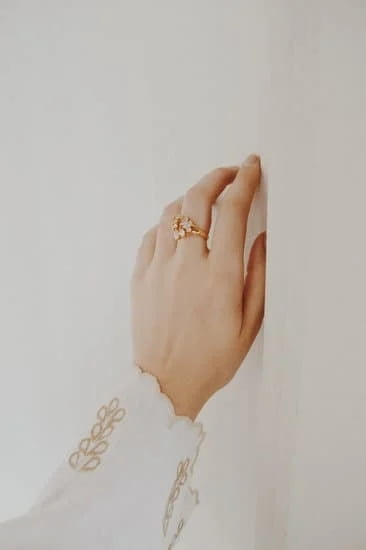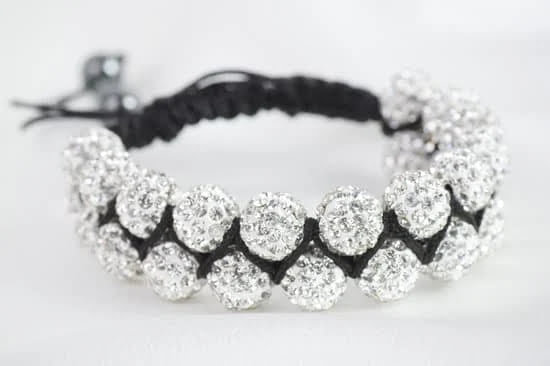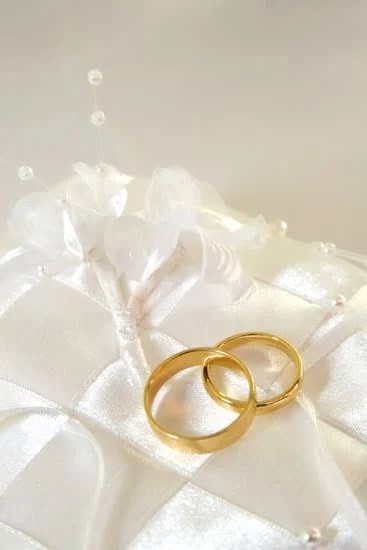Opal jewelry is renowned for its mystical beauty and captivating charm. With its kaleidoscope of colors and unique play of light, opals have been cherished by civilizations throughout history. However, along with their enchanting allure comes a delicate vulnerability that requires careful attention and maintenance.
In this article, we will explore the art of caring for opal jewelry, uncovering techniques to preserve their radiance and protect them from potential damage. From understanding the anatomy of opal to implementing general care practices and avoiding common pitfalls, we will guide you on how to maintain the timeless elegance of your opal jewelry collection.
Opals possess a remarkable ability to refract light into a spectrum of mesmerizing colors, creating an ethereal display known as “opal fire.” This captivating trait has made opals highly coveted in the world of gemstones. However, beneath their exquisite surface lies a fragile composition that demands special handling.
Opals are relatively soft gems compared to diamonds or sapphires, making them susceptible to scratching and chipping when exposed to rough surfaces or impacts. Additionally, they contain a significant amount of water content, contributing to their vulnerability to heat and moisture. Hence, it is crucial to navigate the care of opal jewelry with caution and precision.
To preserve the brilliance and longevity of your opal jewelry, it is essential to understand its anatomy. Opals come in various types such as white opals, black opals, boulder opals, crystal opals, and fire opals – each with its own distinct characteristics.
The type determines factors like color intensity, body tone base color (ranging from white to dark), pattern variations (harlequin versus pinfire), and transparency levels. By familiarizing yourself with these complexities and nuances within the realm of opals, you can better tailor your care routine accordingly.
In the following sections of this article on caring for opal jewelry, we will delve deeper into the anatomy of opals, explore general care practices, provide cleaning dos and don’ts, discuss protection from environmental damage, highlight common mistakes to avoid, and offer insight into long-term maintenance and professional care. By following these guidelines, you can enjoy opal jewelry that radiates its timeless elegance for years to come.
Understanding the Anatomy of Opal
Opals are one of the most mesmerizing gemstones, with their play of iridescent colors and unique patterns. To truly appreciate and care for opal jewelry, it is important to understand their anatomy, including the different types available, the significance of opal colors, and their various characteristics.
Firstly, let’s explore the different types of opals. Opals can be categorized into two primary categories: precious opals and common opals. Precious opals are further subdivided into three types: white opal, black opal, and crystal opal. White opals have a milky or pale body color with vibrant flashes of color, while black opals have a dark body color that enhances the brilliance of the play-of-color. Crystal opals are mostly transparent or translucent with beautiful rainbow-like hues.
The color of an opal is a significant factor in its value and allure. Opals display a variety of colors such as red, blue, green, yellow, orange, and purple. The rainbow-like play-of-colors occurs due to the diffraction of light through tiny spheres or voids within the gemstone structure. Each color has its own charm and appeal, making each piece of opal jewelry unique.
Opals possess several fascinating characteristics that make them both beautiful and delicate. It is important to note that they have a relatively low hardness compared to other gemstones. On the Mohs scale, which measures mineral hardness from 1 to 10 (with 10 being the hardest), opals rank between 5.5 to 6.5. This means they require careful handling as they can easily get scratched or chipped if subjected to rough treatment.
| Type | Description |
|---|---|
| White Opal | Milky or pale body color with vibrant flashes of color. |
| Black Opal | Dark body color that enhances the brilliance of the play-of-color. |
| Crystal Opal | Mostly transparent or translucent with rainbow-like hues. |
Understanding the anatomy of opals, including their types, colors, and characteristics is essential in caring for opal jewelry. This knowledge will guide you in handling these delicate gemstones and appreciating their timeless beauty.
General Care and Handling Tips for Opal Jewelry
Opal jewelry is known for its stunning beauty, but it is also important to understand that opals are delicate and require special care. To ensure the longevity of your opal jewelry, it is crucial to follow a few general care and handling tips.
Firstly, gentle handling is paramount when it comes to opal jewelry. Opals are relatively soft gemstones and can be easily scratched or chipped. Therefore, it is essential to avoid any rough contact or impact with other hard objects. It is advisable to remove your opal jewelry before engaging in any physical activities, such as sports or household chores.
Another important aspect of caring for opal jewelry is avoiding unnecessary exposure. Opals can be sensitive to sudden temperature changes or extreme heat, which can cause them to crack or lose their luster. Additionally, prolonged exposure to sunlight or strong artificial light can fade the colors of certain opals over time. Remember to take off your opal jewelry when using hot water, taking a shower, or applying beauty products such as lotions and perfumes.
Proper storage is crucial in maintaining the integrity of your opal jewelry. Consider storing your opals separately from other gemstones and metals in a soft pouch or a fabric-lined box to prevent scratches or tangling with other pieces. In addition, keeping opals away from excessive humidity can help prevent potential damage; hence, storing them in a dry environment is recommended.
To summarize:
- Handle opal jewelry with care and avoid rough contact.
- Remove opal jewelry during physical activities.
- Avoid exposing opals to extreme temperature changes and direct sunlight.
- Store opals separately in a soft pouch or fabric-lined box.
- Keep opals away from excessive humidity.
By following these general care and handling tips for your opal jewelry, you can ensure its longevity and continue enjoying its captivating beauty for years to come. Proper care not only preserves the inherent elegance of your prized opal jewelry but also protects its sentimental value.
Cleaning Opal Jewelry
Opals are stunning gemstones that require regular cleaning to maintain their lustrous appearance. However, it is crucial to handle and clean opal jewelry with care to prevent damage. In this section, we will provide you with useful dos and don’ts when it comes to cleaning opal jewelry.
DO: Use Mild Soap and Warm Water
One of the safest and most effective ways to clean opal jewelry is by using mild soap and warm water. Fill a bowl with lukewarm water and add a few drops of gentle dish soap or baby shampoo. Gently place your opal jewelry in the soapy water and let it soak for a few minutes.
Then, use a soft toothbrush or a lint-free cloth to gently scrub the surface of the opals. Rinse the jewelry thoroughly under running water to remove any soap residue and pat it dry with a clean cloth.
DON’T: Use Harsh Chemicals or Ultrasonic Cleaners
Avoid using harsh chemicals such as bleach, ammonia, or acetone when cleaning your opal jewelry as they can dull or damage the stones. Opals are also sensitive to high temperatures, so avoid using ultrasonic cleaners that utilize heat or vibration as they can cause cracks or fractures in the gemstone.
DO: Store Opal Jewelry Properly
When not wearing your opal jewelry, it is essential to store them properly to protect them from scratches and other potential damage. Keep your opals separate from other gems in a soft pouch or lined box to prevent any scratching or abrasion. Additionally, consider storing them away from direct sunlight as prolonged exposure can fade their vibrant colors over time.
| Do: | Don’t: |
|---|---|
| Store opal jewelry in a soft pouch or lined box. | Store opals together with other gemstones without protection. |
| Avoid direct sunlight and extreme temperature fluctuations. | Expose opal jewelry to prolonged sunlight or extreme temperatures. |
By adhering to these dos and don’ts when cleaning and storing your opal jewelry, you can ensure its longevity and continue to admire its timeless elegance for years to come. Remember, gentle care is the key to preserving the beauty of opals.
Protecting Opals from Environmental Damage
Opals are exceptionally beautiful gemstones that require special care and attention to protect them from environmental damage. Moisture, heat, and sunlight can all have detrimental effects on opal jewelry if proper precautions are not taken. In this section, we will discuss the potential hazards of exposure to these elements and provide tips on how to shield opal jewelry from damage.
Moisture is one of the biggest threats to opals as it can cause them to crack or lose their vibrant colors. To protect your opal jewelry from moisture, it is essential to remove it before engaging in activities such as swimming, showering, or doing dishes. When storing opal jewelry, always make sure it is completely dry and place it in a sealed container with a silica gel packet or anti-tarnish strip to absorb any excess moisture.
Heat can also be damaging to opals as it can cause them to become dehydrated and develop cracks. It is important to avoid exposing your opal jewelry to direct heat sources such as hot water, hair dryers, or heated styling tools. Additionally, never leave your opal jewelry in a hot car or near radiators. Instead, store your opals in a cool and dry place away from extreme temperature fluctuations.
Sunlight can fade the colors of some opals over time, especially those with delicate hues like pink or blue. To protect your opal jewelry from sunlight damage, avoid wearing it for prolonged periods in direct sunlight. If you do wear your opal jewelry outside during the day, consider keeping it covered with clothing or seeking shade whenever possible. When not being worn, store your opals out of direct sunlight in a box or drawer.
By following these guidelines and taking necessary precautions, you can protect your precious opal jewelry from environmental damage and keep its beauty intact for years to come. Remember that prevention is key when it comes to caring for your opals, so always be mindful of the potential risks and take the necessary steps to safeguard your jewelry.
Avoiding Common Mistakes
Overexposure to Water and Moisture
Opals are highly sensitive to water and moisture, making them prone to damage if exposed for prolonged periods. One common mistake that people make is wearing opal jewelry while engaging in activities that involve water, such as swimming or washing dishes. To avoid damaging your opal jewelry, it is crucial to remove it before coming into contact with water. If exposed to moisture accidentally, ensure that you gently dry the opal with a soft cloth immediately.
Incorrect Storage
Improper storage can lead to scratches, chips, or other forms of damage to your opal jewelry. Avoid storing opals alongside other pieces of jewelry that may rub against them and cause abrasions. Additionally, direct sunlight and extreme temperature fluctuations can be harmful. It is recommended to store opal jewelry in a cool, dry place away from sunlight and heat sources. To provide extra protection and prevent scratching, consider storing opals individually in soft pouches or compartments.
Using Harsh Chemicals or Cleaning Methods
Using harsh chemicals or abrasive cleaning methods can severely damage opal jewelry. Avoid using ultrasonic cleaners, steamers, or any harsh detergents on your opals as they may cause discoloration or even cracks. Instead, clean your opal jewelry by gently wiping it with a soft cloth dampened with water and mild soap solution. Be sure to rinse well afterward and pat dry with a clean cloth. Alternatively, you can use specialized gemstone cleaning solutions specifically designed for delicate gems like opals.
By being aware of these common mistakes and pitfalls when it comes to caring for your opal jewelry, you can greatly minimize the risk of damage and keep your precious pieces looking beautiful for years to come. Remember that prevention is key – handle your opal jewelry with care, store it properly, and clean it using gentle methods. Following these guidelines will ensure that you can enjoy the elegance and splendor of opals while preserving their value for generations.
Long-Term Care for Opal Jewelry
Opal jewelry is not only beautiful but also delicate, requiring special care to ensure its longevity. In this section, we will explore the importance of long-term care for opal jewelry, including regular maintenance and seeking professional care when needed.
Regular Maintenance
Regular maintenance is essential to keep opal jewelry looking its best and prevent any potential damage. One important aspect of maintenance is cleaning your opal jewelry regularly. However, it’s important to note that opals should be cleaned with caution due to their vulnerability. Avoid using harsh chemicals or abrasive techniques that can harm the opals. Instead, opt for gentle cleaning methods such as using a soft cloth or a soft toothbrush with warm soapy water.
In addition to cleaning, inspecting your opal jewelry regularly is crucial in detecting any signs of damage or loosening settings. Gently examine each stone and check the prongs or settings for any signs of wear or damage. If you notice any issues, it’s best to seek professional repair services rather than attempting to fix them yourself.
Professional Care
While regular maintenance can go a long way in preserving the beauty of your opal jewelry, there are certain tasks that should be left to professionals. For example, if you have a valuable or antique piece of opal jewelry, it’s recommended to have it professionally cleaned and inspected at least once a year. Professional jewelers have the expertise and specialized tools necessary to handle opals delicately while addressing any issues that may arise during the inspection process.
Furthermore, if you need repairs or modifications done on your opal jewelry, seeking professional assistance is crucial. Whether it’s resizing a ring or replacing a damaged stone setting, professional jewelers can offer precise and expert solutions while minimizing the risk of further damage.
By following these long-term care practices and seeking professional expertise when necessary, you can enjoy your opal jewelry for years to come. Remember, opals are unique gemstones that require special attention and care to retain their timeless elegance.
Final Thoughts
In conclusion, opal jewelry is truly a treasure that deserves special care and attention. Throughout this article, we have explored the beauty and fragility of opals, as well as the various types, colors, and characteristics of these stunning gemstones. We have also provided important tips for general care and handling, cleaning dos and don’ts, protecting opals from environmental damage, avoiding common mistakes, and ensuring long-term maintenance.
In order to preserve the timeless elegance of opal jewelry, it is crucial to follow the provided care guidelines. Gentle handling and proper storage are essential to prevent damage. When cleaning opals, it is important to use safe methods and avoid harsh chemicals or techniques that can harm these delicate gemstones. Shielding opals from elements such as moisture, heat, sunlight, temperature fluctuations is also key in maintaining their beauty.
Lastly, seeking professional cleaning and inspection on a regular basis can help ensure the longevity of your opal jewelry. Professionals can provide specialized care that may not be possible at home. It is also advisable to seek repairs or modifications when necessary to prevent further damage or degradation.
By following these guidelines and taking proper care of your opal jewelry, you will be able to enjoy their elegance for many years to come. Remember that each piece of opal jewelry is a unique work of art that deserves appreciation and preservation. So embrace its allure and charm while also safeguarding its delicate nature through gentle handling and careful maintenance.
Frequently Asked Questions
Can I wash my hands with an opal ring on?
It is generally not recommended to wash your hands with an opal ring on. Opals are relatively fragile gemstones, and they can be sensitive to harsh chemicals and excessive moisture.
Soap, detergents, and other cleaning agents commonly used while washing hands can potentially damage the opal by dulling its colors or causing it to become more susceptible to cracks or chips. Therefore, it is advisable to remove any opal jewelry before washing your hands to protect its beauty and integrity.
Can you wear opals in the shower?
While it may be tempting to wear opals in the shower, it is best to avoid doing so. Opals are hydrous gemstones, meaning they contain some amount of water within their structure. Prolonged exposure to water, particularly chlorinated or hard water in showers, might lead to dehydration of the stone and cause it to lose its brightness or develop fractures over time.
Additionally, shampoo, soaps, and conditioners used in showers often contain chemicals that can potentially harm opals. Hence, removing opal jewelry before entering the shower is a safer practice.
Can opal be worn everyday?
Opals can generally be worn every day; however, some care should be taken to preserve their beauty and durability. While opals have a hardness rating of 5.5-6.5 on the Mohs scale (comparatively softer than other gemstones), they are still suitable for regular wear if properly maintained. To minimize the risk of damage or loss of luster, avoid exposing opals to extreme temperature changes, chemicals such as household cleaners or perfumes, and physical impacts or pressure that could lead to chipping or cracking.
Additionally, storing opal jewelry separately in a soft cloth pouch when not being worn can help prevent potential scratches from other harder materials like metals or diamonds that might be stored together with them. Overall, with proper care and precautionary measures observed, opals can make stunning everyday adornments that bring their unique play of colors and elegance to your attire.

Welcome to my jewelry blog! My name is Sarah and I am the owner of this blog.
I love making jewelry and sharing my creations with others.
So whether you’re someone who loves wearing jewelry yourself or simply enjoys learning about it, be sure to check out my blog for insightful posts on everything related to this exciting topic!





